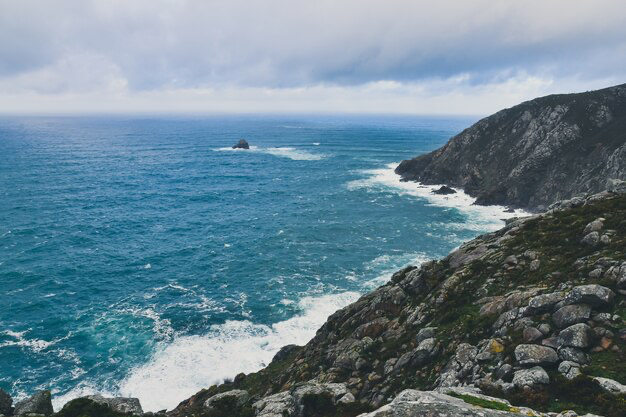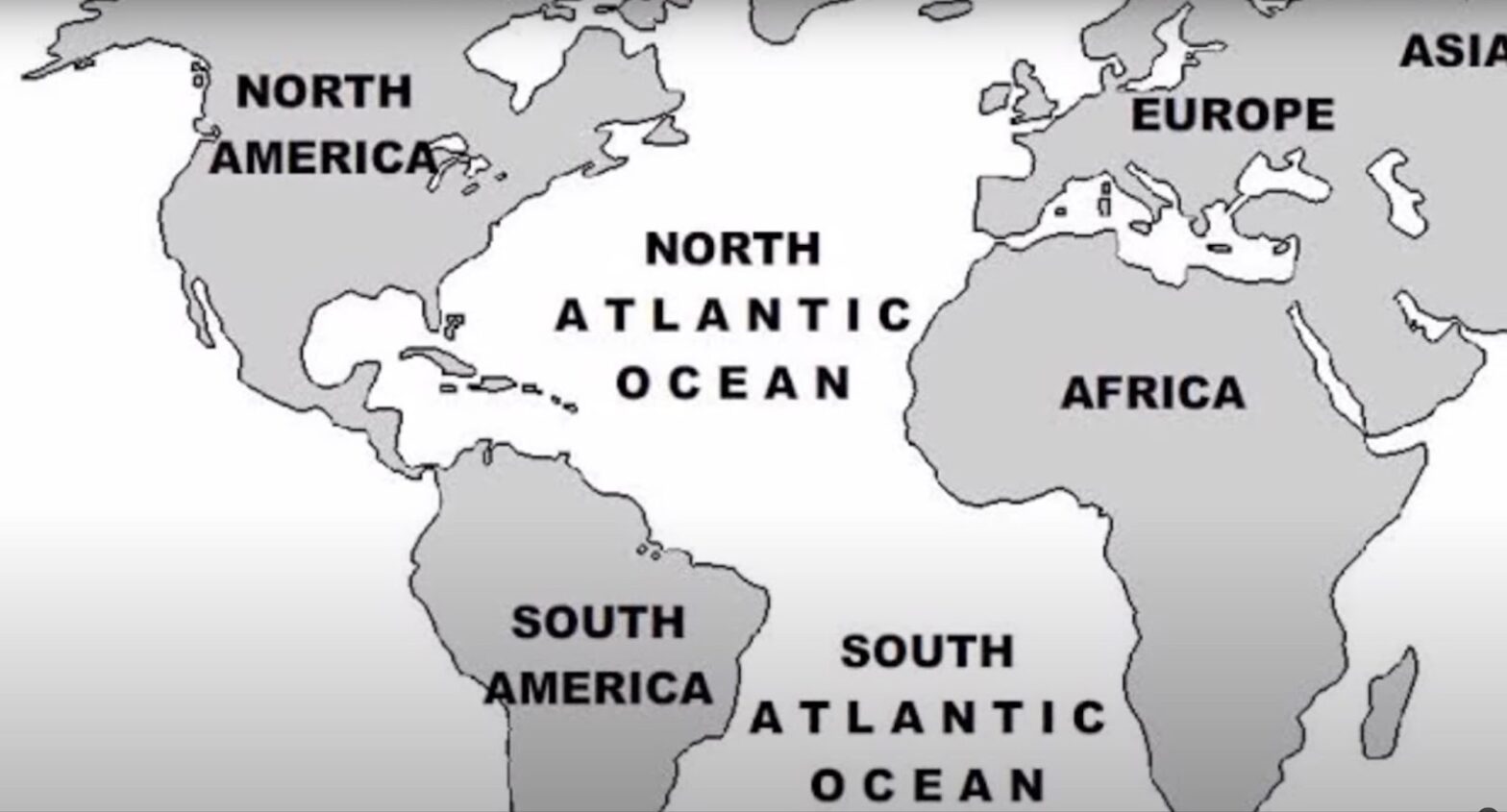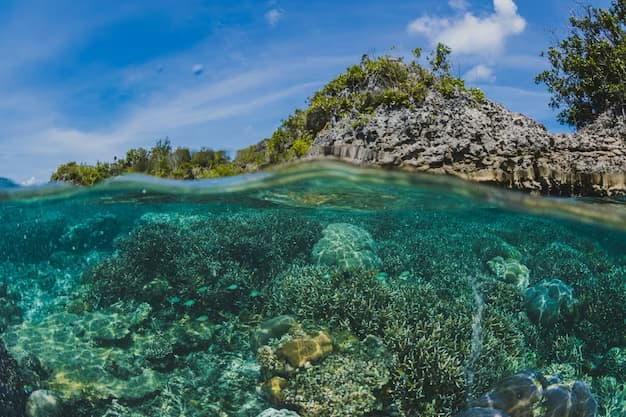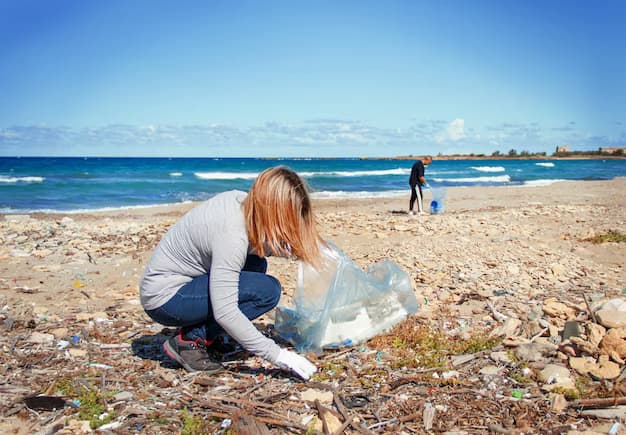The Atlantic Ocean, covering 20% of the Earth’s entire surface, stands as the world’s second-largest ocean. Its vast expanse spans across 29% of all of the Earth’s water surface, making it second only to the Pacific Ocean. From its deepest point, the Milwaukee Deep off the coast of Puerto Rico, which plunges to a depth of 27,500 feet, to its diverse coastal regions encompassing North, Central, and South America, the Atlantic Ocean holds a myriad of wonders waiting to be explored. This article aims to provide an in-depth exploration of the Atlantic Ocean, delving into its geographical features, marine life, climate patterns and historical significance.
Geographical Features of the Atlantic Ocean
Ocean Depth and Extent
The Atlantic Ocean, with its immense size and depth, is a marvel of nature. At its deepest point, the Milwaukee Deep off the coast of Puerto Rico, the ocean reaches a staggering depth of 27,500 feet, equivalent to almost 19 Empire State Buildings stacked atop one another. This profound depth contributes to the ocean’s rich biodiversity and geological significance. The Atlantic Ocean spans a vast area, covering 41,100,000 square miles, and is bordered by the western shores of North, Central, and South America to the west and Europe and Africa to the east. To further understand the scale of this ocean, consider that it covers approximately 29% of the Earth’s water surface, making it a critical component of the global hydrological cycle.
Comparison of Ocean Depths
| Ocean | Deepest Point (feet) | Average Depth (feet) |
|---|---|---|
| Atlantic Ocean | 27,500 | 12,880 |
| Pacific Ocean | 36,070 | 13,215 |
| Indian Ocean | 24,460 | 13,002 |
| Southern Ocean | 23,737 | 13,100 |
| Arctic Ocean | 18,456 | 3,407 |
Coastal Regions and Climate Patterns
The Atlantic Ocean boasts a diverse array of coastal regions, each with its own unique climate patterns and ecological characteristics. The western shores of the Atlantic Ocean are flanked by the continents of North, Central, and South America, providing a wide range of habitats for marine life and influencing weather patterns across these landmasses. The warm, moist air of the southern Atlantic Ocean often brings rain, hurricanes, and other turbulent weather to Central America and the southern United States before heading north and affecting the east coast of the United States. Notorious weather phenomena such as the Nor’easter and heavy fog off the coast of eastern Canada are attributed to the climatic influence of the Atlantic Ocean.
Countries with Atlantic Coastlines
- North America: Canada, United States;
- Central America: Cuba, Jamaica, Panama;
- South America: Colombia, Venezuela, Argentina, Brazil;
- Europe: Ireland, United Kingdom, France, Spain, Portugal, Belgium, Germany, Denmark, Norway;
- Iceland.

Marine Life in the Atlantic Ocean
Biodiversity and Ecosystems
The Atlantic Ocean harbors a rich tapestry of marine life, encompassing a diverse array of species and ecosystems. Its expansive waters support a wide variety of habitats, ranging from vibrant coral reefs to deep-sea trenches, fostering an unparalleled level of biodiversity. The ocean is home to an extensive range of marine organisms, including fish, mammals, invertebrates, and microorganisms, each playing a crucial role in maintaining the ocean’s ecological balance. The Gulf Stream, a powerful ocean current originating in the Gulf of Mexico, significantly influences the distribution of marine species across the Atlantic Ocean, creating distinct ecosystems and migration patterns.
Iconic Marine Species in the Atlantic Ocean
| Species | Description | Habitat |
|---|---|---|
| Blue Whale | The largest animal on Earth, known for its impressive size and distinctive blue-gray coloration. | Open ocean, migrates between polar and tropical regions |
| Leatherback Turtle | An ancient species of sea turtle, recognized for its unique leathery shell and migratory behavior. | Coastal and open ocean, nesting on sandy beaches |
| Atlantic Cod | A commercially valuable fish species, vital to the economies of numerous coastal communities. | Shallow and deep waters along continental shelves |
| Portuguese Man o’ War | A strikingly beautiful yet venomous marine organism, comprising a colony of specialized polyps. | Drifts on the ocean surface, propelled by wind and currents |
| Great Hammerhead Shark | Distinguished by its unmistakable hammer-shaped head, this apex predator roams the ocean depths. | Coastal and offshore waters, near continental shelves |
The table above showcases some of the iconic marine species inhabiting the Atlantic Ocean, shedding light on the diverse and captivating wildlife found within its waters.
Historical Significance and Exploration of the Atlantic Ocean
Age of Exploration and Transatlantic Voyages
The Atlantic Ocean has played a pivotal role in shaping human history, serving as a conduit for exploration, trade, and cultural exchange. The Age of Exploration witnessed intrepid navigators embarking on transatlantic voyages, charting new territories, and establishing enduring connections between continents. Christopher Columbus’s historic voyage across the Atlantic in 1492 marked a watershed moment in global history, leading to the eventual European colonization of the Americas and transformative cross-cultural interactions. The ocean’s vast expanse has inspired countless tales of maritime adventure and discovery, leaving an indelible imprint on the annals of human civilization.
Key Transatlantic Explorers
| Explorer | Nationality | Notable Expeditions and Discoveries |
|---|---|---|
| Christopher Columbus | Italian | First transatlantic voyage to the Americas in 1492 |
| John Cabot | Italian | Discovery of Newfoundland and exploration of North American coastline |
| Amerigo Vespucci | Italian | Mapping of South American coastline and recognition of a new continent |
| Henry the Navigator | Portuguese | Promotion of transatlantic exploration and establishment of navigation school in Portugal |
| Vasco da Gama | Portuguese | Pioneering maritime route to India via the Cape of Good Hope |
The table above presents notable transatlantic explorers and their contributions to the age of exploration, illuminating the profound impact of their voyages on global history and geographical knowledge.
Maritime Trade and Cultural Exchange
The Atlantic Ocean has long served as a vital conduit for maritime trade, fostering extensive commercial networks and cultural exchanges between continents. The triangular trade routes linking Europe, Africa, and the Americas facilitated the exchange of goods, ideas, and people, shaping the development of societies on both sides of the ocean. Commodities such as sugar, tobacco, cotton, and spices traversed the Atlantic, fueling economic growth and intercontinental commerce. The ocean’s strategic significance as a thoroughfare for global trade continues to resonate in contemporary times, underpinning the interconnectedness of nations and the enduring legacy of transatlantic exchange.
Impact of Triangular Trade Routes
- Facilitated the mass transportation of enslaved individuals from Africa to the Americas, contributing to the establishment of plantation economies;
- Catalyzed the exchange of agricultural products, raw materials, and manufactured goods between Europe, Africa, and the Americas;
- Fomented cultural diffusion and syncretism, leading to the amalgamation of diverse traditions and customs across continents;
- Stimulated the growth of port cities and maritime industries, fostering urbanization and economic prosperity.
Conclusion
In conclusion, the Atlantic Ocean stands as a monumental force of nature, encompassing awe-inspiring depths, diverse ecosystems, and profound historical significance. From its expansive coastal regions to its vital role in global trade and transportation, the Atlantic Ocean shapes the fabric of our planet in multifaceted ways. However, as the ocean faces mounting environmental challenges, concerted efforts toward conservation, sustainability, and climate resilience are imperative to ensure the preservation of its natural splendor for generations to come. By embracing a holistic approach to ocean stewardship and fostering international collaboration, we can strive to safeguard the Atlantic Ocean and uphold its invaluable contributions to the well-being of our planet.



